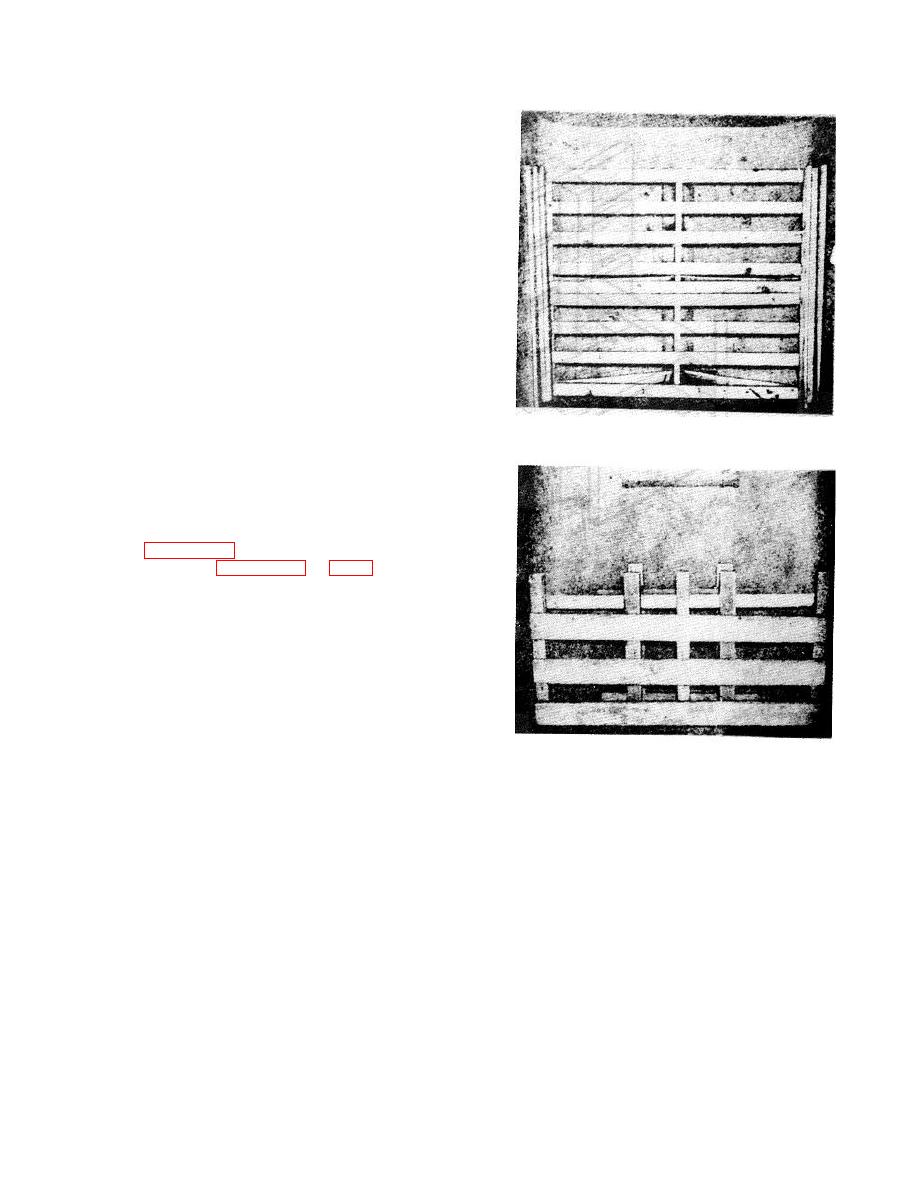 |
|||
|
|
|||
|
|
|||
| ||||||||||
|
|
 TM 38-400/NAVSUP PUB 572/AFMAN 23-210 MCO 4450.14/DLAM 4145.12
All loads will be balanced in the vehicle lengthwise and
crosswise before the vehicle is released. Precautions
will be taken to prevent vertical movement because of
sudden stops or travel over rough terrain, as vertical
movement can cause the breakdown of good blocking
and bracing practices. If the load is not tight or is out of
alignment, the unbalanced loading will cause unequal
pressures. The use of bulkheads, separation gates,
dividers (lengthwise and crosswise), layer separations,
runners, blocks, cleats, and strapping properly
fabricated and applied, will eliminate or prevent all load
movement.
(2) Forward movement. Forward movement
can be prevented by shoring firmly against the front or
nose bulkhead. The front bulkhead serves to square the
load and to distribute load pressures over the frontal
area of the vehicle rather than just at points of contact.
When a vehicle, furnished by the motor carriers, has a
Figure 3-33. Front bulkhead.
rounded or streamlined front end or an end other than
square and the material to be loaded is a critical item, a
delicate or fragile item, or an item that requires special
protection and straight alignment to assure safe arrival
at destinations, front bulkheads of a type and size
compatible with the weight and type of commodity to be
shipped may be used. A typical nose or front bulkhead
is shown by figure 3-33. Front bulkhead detail and
installation is shown by figures 3-34 and 3-35. The use
of front bulkheads is not necessary in square nose
trailers or vans unless the nose of the trailer or van has
been bulged by forward load movement in previous
shipments. If such a condition exists and the material to
be shipped falls in the category previously outlined, the
front bulkhead should be used.
Figure 3-34. Front bulkhead-positioned in trailer,
detail of bulkhead.
3-66
|
|
Privacy Statement - Press Release - Copyright Information. - Contact Us |